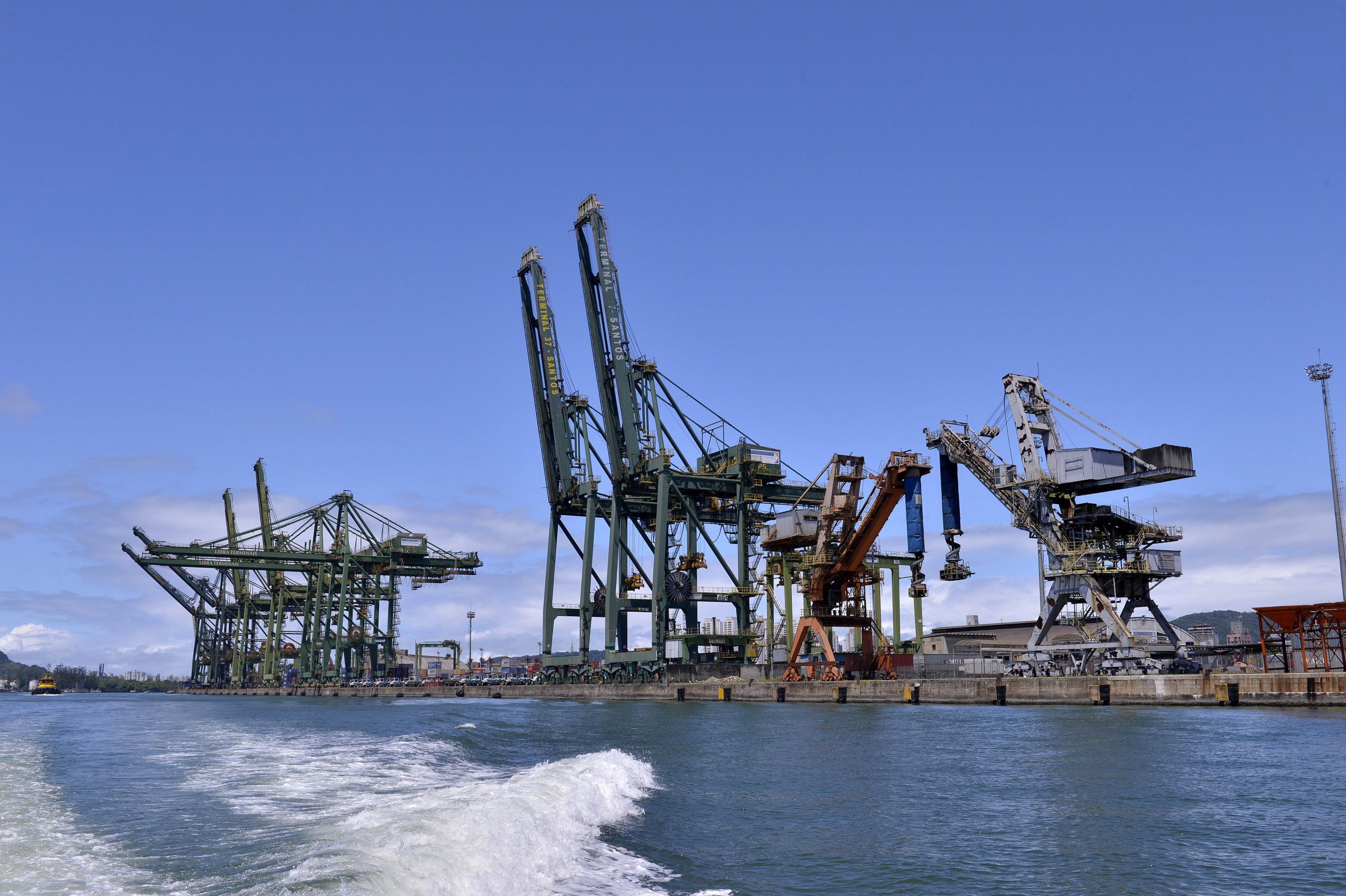Brazil has further advanced discussions about the proper dredging modeling for the nation’s port of Santos. Latin America’s busiest port has struggled in the past to keep dredging, following delayed contracts and legal disputes involving Brazil’s EEL Infraestruturas and more recently a consortium made up of Van Oord and Boskalis.
Last year, a group of companies and local associations proposed a model that was thought to address the port’s woes: the so-called Santos17.
Under the proposal of the Santos17 group, which was basically made up of port operators, a special-purpose entity (SPE) would be established to manage all dredging. The proposal was known as the “condominium” model.
However, the “condominium” model also raised concerns among participants of an industry event attended by International Dredging Review (IDR) last year.
Luís Felipe Valerim Pinheiro, director of the infrastructure department of São Paulo industrial trade association Fiesp, said at the time the concession model would offer more legal security.
“The condominium model is an avenue that needs to be built. It is a model where we can share costs, but not necessarily a concession activity. If it is not possible, we can have the concession model. It has maturity and offers legal security for 10, 15 and eventually 20 years,” Pinheiro said at the time.
The Concession Model
Codesp, the São Paulo state-owned Port of Santos operator, had welcome the “condominium” idea back in 2017. The entity’s president, Alex Oliva, told IDR last year the proposal was “viable.” Codesp didn’t return phone and email requests for comment. However, a spokesperson explained dredging at the port of Santos continues to be a “federal duty.”
“The existing dredging contract we have today (with the Van Oord-Boskalis consortium) was a government permission (for dredging),” the Codesp spokesperson said.
“The modeling for dredging at the Port of Santos is still a discussion,” the spokesperson said, declining to provide further comment.
IDR has learned the government sat down with the dredging industry, including Boskalis, Van Oord, the DEME Group and Jan De Nul, to discuss which option could be beneficial for all the involved parties.
Historically, the Brazilian government has been responsible for dredging the Port of Santos. But a growing public deficit in recent years helped the government support the idea of privatizing dredging at the port of Santos.
“We did establish a working group to analyze the Santos17 condominium idea. But we have two problems with it: there’s the risk one can over judicialize the discussions … and there’s (Brazil’s) fiscal (debt) issue,” Luiz Fernando Garcia da Silva, special advisor for the nation’s Ministry of Transports, Ports and Civil Aviatio (MTPA) told IDR in a phone interview.
Commenting on the Santos17 proposal, Silva said a new model would require new legislation.
“First, you create an innovative model, which has never been tested. But then it would need to become a law. But what if the idea doesn’t work? Shall we then annul the law? The second risk is this: what assurance would we have that a given draft law wouldn’t be changed during further discussions in the Congress?” he questioned.
Silva said the dredging companies asked for the “indexation” of costs on long-term contracts, so deals could reflect the US dollar (USD) currency volatility over the Brazilian real (BRL).
The MTPA special advisor said the working group also looked at other options, including extending contracts, but the group ended up favoring the concession proposition.
“We reached the understanding the concession model would be legally safer,” Silva said.
The government official said discussions are expected to advance, but he declined to provide a timeline for when Brazil could potentially release a new dredging tender for the Port of Santos.
The existing proposal would allow the winning bidder to handle dredging for a 30-year term, with the possibility to extend the contract for a further 70-year period.
Past Contracts and Project Future
Brazil’s EEL Infraestruturas won a public tendering of BRL 369 million ($116.36 million USD) to deepen the port’s entrance channels and berths. The public tendering was opened in July 2015, but EEL Infraestruturas was only able to sign a deal in April 2016.
Despite securing a contract, EEL failed to present the guarantees required by the Brazilian government in order to perform the project.
Designed to start in October 2014, dredging was expected to deepen the port’s channel and the berths’ access bays to between 15.4 to 15.7 meters (about 50.5 to 51.5 feet) over a period of three years.
Despite signing a contract, EEL couldn’t prove it had a strong enough financial structure to carry out the project. It tried to present three different guarantees, all of which were rejected by the country’s Secretariat of Ports (SEP), which is now extinct.
Even so, EEL still had the chance to prove it could assume the project. But it didn’t. Until recently, dredging contracts at the massive port have been broken up into segments, all of which have rescission clauses.
More recently, in February this year, the Brazilian Ministry of Transports, Ports and Civil Aviation awarded the capital and maintenance dredging of the Port of Santos to a JV formed by Van Oord and Boskalis for a total of BRL 369 million ($116.36 million US). Van Oord already had a contract to dredge the port’s berth areas in the sections 1, 2, 3 and 4, but the deal expired on October 15 last year.
But a new legal setback has put more pressure over the already delayed dredging project, when Brazilian court determined EEL should assume the project awarded to the Van Oord, Boskalis JV.
Meanwhile, state-owned port operator Codesp opened a separate competitive bidding in July 2016 to keep the port’s depth near 15 meters (about 49.2 feet), which was won by Dragabras Serviços de Dragagem.
The Codesp dredging contract is provisional and aims to keep the port’s depth at certain levels until the government contract is solved.




